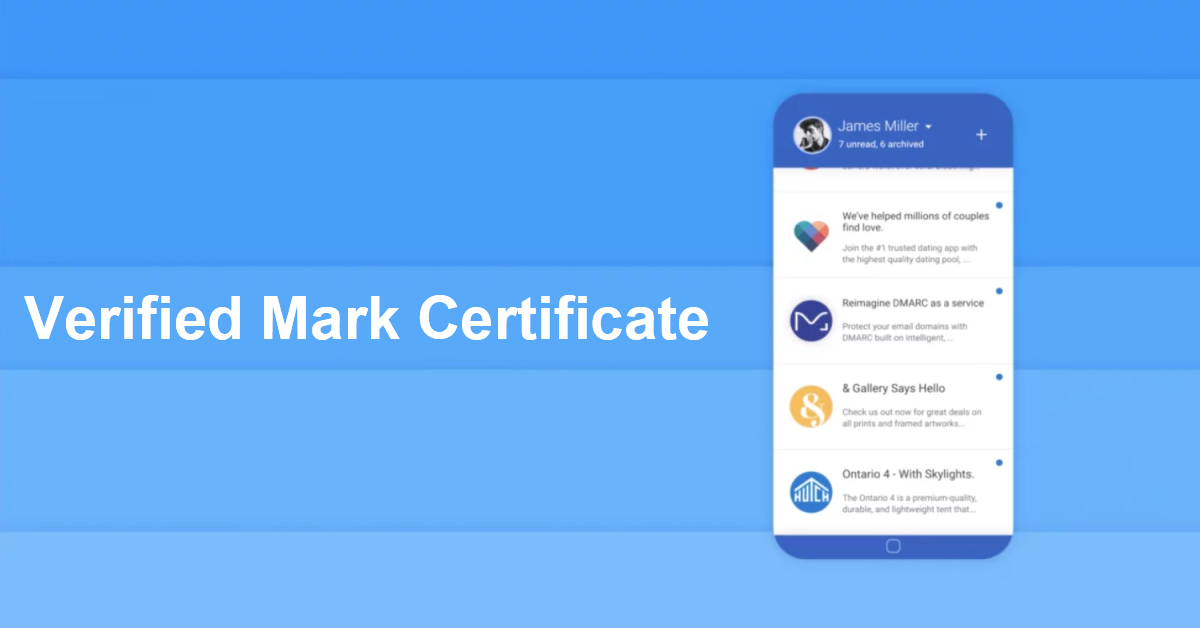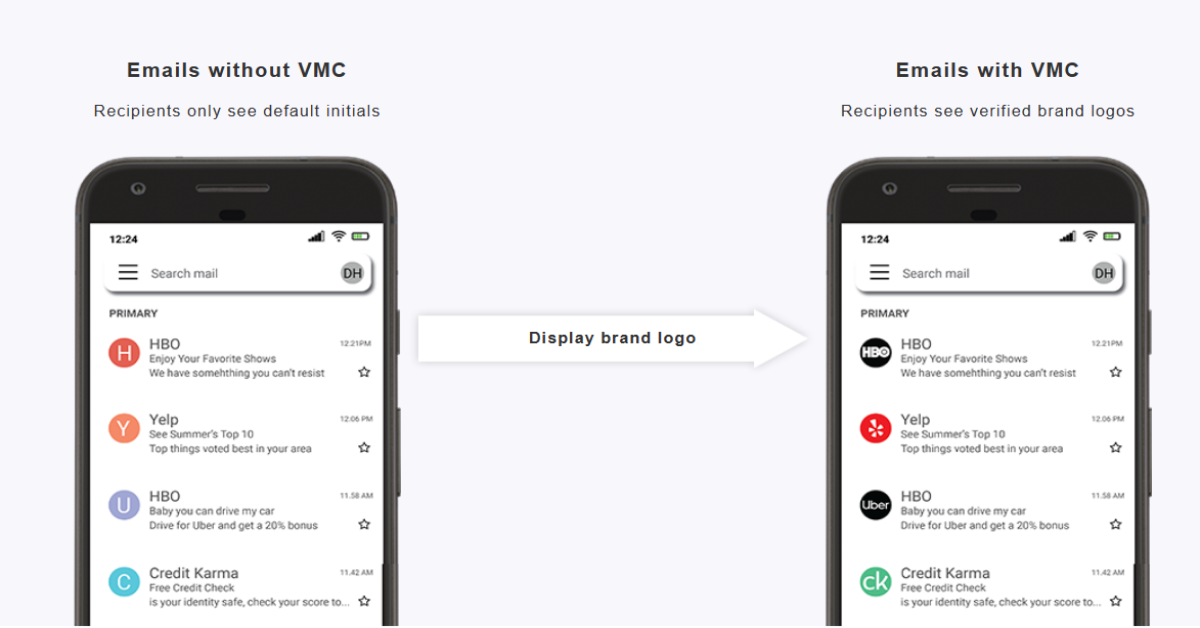SSL Certificate
Deploy an SSL certificate to enable HTTPS encryption of websites, trusted identity authentication and prevent against data leaks or tampering during transmission.
Get SSL Certificate >Blog > Verified Mark Certificate - Making Email Security Visible.
Tag:
Verified Mark Certificate
NicSRS
VMC
3336:0
CatherineSeptember 8 2023

Since the birth of email marketing, the number of advertisements sent via email has far exceeded traditional mail. Competing for customers' email inboxes has become the primary focus for sales professionals. However, in the midst of this battle, the authenticity of emails has been sidelined, as practically anyone can pretend to be a legitimate company and send emails. Consequently, anyone who lets their guard down could potentially become a victim. That's where Verified Mark Certificates step in, providing a powerful solution to establish trust and credibility in email communications. VMC and BIMI can visually prove the authenticity of the sender's brand in email communication by displaying the sender's unique logo next to the email, thereby effectively reducing phishing risks.
A Verified Mark Certificate, often referred to as VMC, is a digital certificate issued by a certificate authority that verifies the authenticity of the sender's brand identity in email communications. A VMC confirms your brand complies with DMARC email standards and that your messages are legitimate and sent from your secure domain. Through VMC and DMARC, organizations can display their registered trademark logo in the avatar slot when sending emails. And that means, rather than default initials, your customers see your logo in their inbox even before they open your email.
Although a VMC is optional, many email clients, including Gmail, require a VMC to display your brand logo in the inbox.

BIMI also known as brand indicators for message identification, is a technology that binds DMARC technology along with VMC together. BIMI provides a visual indicator, typically a brand's logo or icon, that is displayed alongside the sender's email in the recipient's inbox. This allows your organizations to send emails and ensure that they re coming from you and not from another organization. Generally, a VMC needs to be associated with a BIMI record as a tamper-resistant security measure.
1. Enhanced Trust and Credibility: VMCs establish trust from the moment an email lands in a recipient's inbox. The visual indicator offers a clear signal that the email is from a verified and trusted sender.
2. Reduced Phishing Risk: Phishing attacks are a major cybersecurity concern. VMCs make it harder for malicious actors to impersonate legitimate brands, protecting both businesses and consumers from phishing attempts.
3. Improved Email Engagement: Recipients are more likely to open and engage with emails that bear the VMC visual indicator. This means higher open rates, click-through rates, and overall engagement, which can be especially beneficial for marketing and communication efforts.
4. Brand Recognition: The visual indicator provided by VMCs reinforces brand recognition and awareness. It ensures that your brand's logo or icon is consistently associated with legitimate emails, helping to solidify your brand identity.
5. Compliance with Email Standards: VMCs are issued following rigorous verification processes and adherence to email authentication standards like DMARC. This ensures that your email communications align with industry best practices.
The process of obtaining a VMC is not as complicated as you might expect. Before you can qualify for a VMC, your organization needs to meet the following requirements to validate the domain and brand identity.
1. Implement DMARC standards. What is DMARC exactly? DMARC, which stands for "Domain-based Message Authentication, Reporting, and Conformance," is an email authentication and reporting protocol that helps prevent email spoofing, phishing, and fraudulent emails. It allows domain owners to specify how their email should be authenticated and what actions should be taken when authentication fails.
2. Trademark your logo. Your brand logo must be registered as a trademark with an intellectual property office recognized by VMC issuers. If you are unsure whether a corporate trademark is registered, you can search on the World Intellectual Property Organization (WIPO) website (https://www3.wipo.int/branddb/en/) to check if it is listed as a valid registered trademark. Additionally, certain trademark offices are approved for applying for VMCs, and you can inquire about this from the VMC provider.
3. Convert your logo file to the .SVG format. Now, you need to convert the logo into a scalable vector graphic (or .SVG) format. If your logo contains complex artwork, you may need to make modifications for it to display correctly.
4. Purchase a VMC. NicSRS now offers DigiCert and Entrust VMC. You can choose the VMC that suits your specific needs. In general, many organization email domains require only one VMC. For specific details, you can consult NicSRS for help.
5. Install your VMC. Upload the certificate to the server. After your VMC is issued, you will receive an email with an attachment containing the Physical Entity Certificate Privacy Enhanced Mail (PEM) file.
In conclusion, Verified Mark Certificates are a powerful tool for establishing trust and credibility in email communications. They offer numerous benefits. When compared to not using VMCs, the advantages are clear: better visibility, better email security, better open rates and better user experiences.
RELATED
2025-12-18 15:37:42
2025-12-17 18:03:54
2025-12-04 11:44:39
2025-11-27 13:34:03
2025-10-22 15:01:21
Categories

Free SSL Tools
Top Posts
Comments